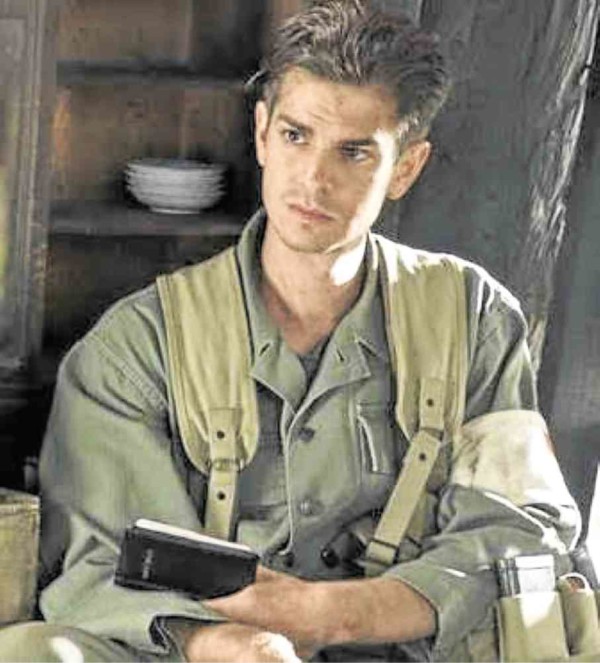Amazing courage of a conscientious objector
As we watched Mel Gibson’s new war drama, “Hacksaw Ridge,” recently, we got the strange feeling that we were viewing two films instead of just one.
The movie’s first half focused on the drama’s backstory, the childhood years of its protagonist, played in adulthood by Andrew Garfield.
Desmond Doss was brought up as a Seventh Day Adventist, and thus was prohibited by his faith from bearing arms.
As a child, he nearly killed his younger brother, so the caveat against violence was even more strongly and vividly ingrained into his consciousness—and conscience.
Years later, he takes an injured youth to the hospital, and falls in love with a nurse he meets there.
At the outbreak of the Second World War, Desmond wants to enlist as a soldier, but since his faith doesn’t allow him to bear arms, it looks like an impossibility—until he hits upon a compromise:
He will enlist to become a medic, so he doesn’t need to carry and fire a weapon.
Can this, in fact, happen? It turns out that it’s possible, if he enlists as a conscientious objector. But, it’s early and pioneering days in the conflict, so it’s difficult for Desmond to get official approval for his unusual request.
Instead, the army subjects him to a series of physical tests and challenges intended to make him give up the fight. But, he refuses to cooperate and eventually wears his senior officers down with his bullheaded resolve.
This first half convinces viewers that this cinematic protagonist is not just principled, but also determined enough to triumph over the tests and dangers of war—even without a weapon.
True enough, when Desmond does become a medic, his unit is assigned to the daunting Battle of Okinawa. His infantry division is ordered to regain control of a steep escarpment called Hacksaw Ridge, to stop the Japanese army in its tracks.
Previous efforts to win the crucial battle have met with brutally heavy Allied losses, and Desmond’s division suffers a similar fate—until its surviving troops’ courage and his personal bravery achieve seemingly impossible victory, against overwhelming odds!
Other US soldiers are inspired by the conscientious objector’s being able to rescue a staggering total of 75 injured soldiers, and then pull them out of harm’s way by rappelling them down on the steep escarpment.
In turn, they are driven to feats of courage that turn the tide of the battle—and, eventually, the war.
The “impossibility” of Desmond’s courage and heroism could have severely compromised the film’s believability. But Gibson and his cast and crew keep things felt, graphic and real, so empathy is sustained.
Gibson’s penchant for gutsy, gritty and in-your-face cinema imbues his film’s battle scenes with indelible and visceral images of flesh, blood, bone and innards being blown or burned to “convincing” bits.
This doesn’t just make for shocking cinema; it also “proves” that war is hell, so mankind should avoid pushing its pocket conflicts past the limits of compromise and resolution.
The fact that so much courage is being vivified by a soldier who refuses to bear arms only makes the key point convincingly clear—enough, we hope, for viewers to do their best to promote and push for peace and nonviolence in their own spheres of influence and persuasion.















